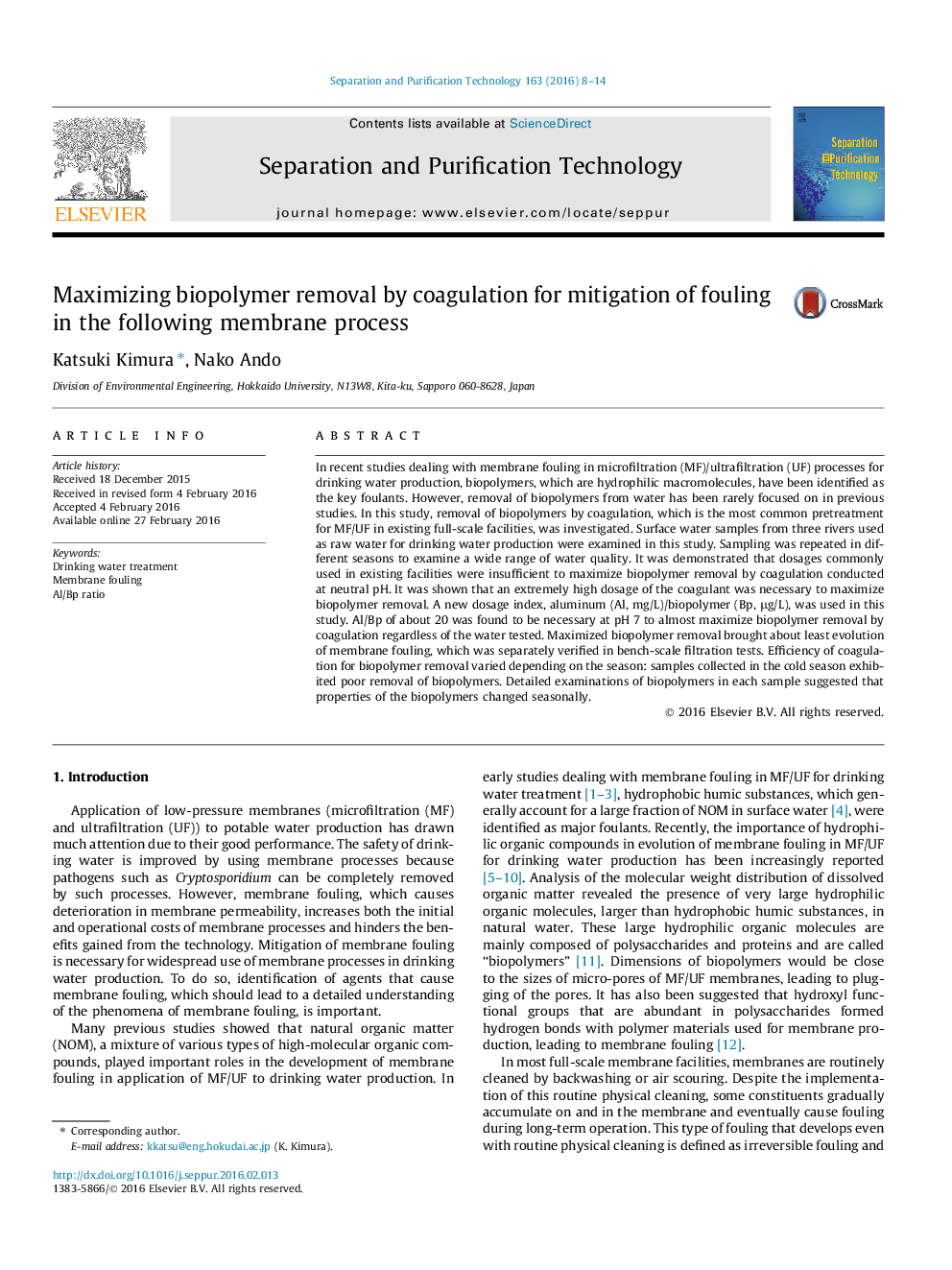| Article ID | Journal | Published Year | Pages | File Type |
|---|---|---|---|---|
| 640072 | Separation and Purification Technology | 2016 | 7 Pages |
•Surface water samples from three rivers.•Seasonal variation in efficiency of biopolymer removal was obvious.•Commonly used dosages of a coagulant were insufficient for biopolymer removal.•A new coagulant dosage index (Aluminum/Biopolymer; Al/Bp) was proposed.•Al/Bp of 20 maximized biopolymer removal at pH 7 regardless of the sample.
In recent studies dealing with membrane fouling in microfiltration (MF)/ultrafiltration (UF) processes for drinking water production, biopolymers, which are hydrophilic macromolecules, have been identified as the key foulants. However, removal of biopolymers from water has been rarely focused on in previous studies. In this study, removal of biopolymers by coagulation, which is the most common pretreatment for MF/UF in existing full-scale facilities, was investigated. Surface water samples from three rivers used as raw water for drinking water production were examined in this study. Sampling was repeated in different seasons to examine a wide range of water quality. It was demonstrated that dosages commonly used in existing facilities were insufficient to maximize biopolymer removal by coagulation conducted at neutral pH. It was shown that an extremely high dosage of the coagulant was necessary to maximize biopolymer removal. A new dosage index, aluminum (Al, mg/L)/biopolymer (Bp, μg/L), was used in this study. Al/Bp of about 20 was found to be necessary at pH 7 to almost maximize biopolymer removal by coagulation regardless of the water tested. Maximized biopolymer removal brought about least evolution of membrane fouling, which was separately verified in bench-scale filtration tests. Efficiency of coagulation for biopolymer removal varied depending on the season: samples collected in the cold season exhibited poor removal of biopolymers. Detailed examinations of biopolymers in each sample suggested that properties of the biopolymers changed seasonally.
